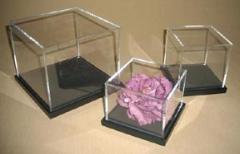There are numerous plastic production methods to choose from, and you will find wide ranges regarding freedom of shape, startup expenses, charges for each component, completion time, and the scale of manufacturing the process enables. Common techniques include CNC (computer numerical control) machining and vacuum formation, each of which cater to distinct design and style and manufacturing requirements. CNC, for instance, provides a moderate level of flexibility when it comes to the form, a finish time of less than a day, a medium set-up cost, steeply-priced individual components, and suits massive scale development. Vacuum formation, in contrast, features a very limited freedom of shape, only suitable for creating simple shapes, and can feature a finish period of up to one month. Furthermore, because there is a diverse scale of CNC machines, ranging from basic desktop devices, to significantly more highly developed machines, the startup costs vary from minimal to high, and the price per part and the completion time are very diverse, and dependent upon the sophistication of the equipment.
Breakdown Of CNC Machining
CNC machining is a computer regulated subtractive process, that eliminates material from plastic as a way to build the chosen form. The computer is high-tech, with the capability to convert a design into numbers using a computer assisted design computer software program. The figures are competent to control the machine to cut the necessary shape. To operate, the machines require an intermediate step in the creation and validation of tool paths. As soon as the machine receives the tool paths, the subtractive process is started. When the construction is finished, the component is cleaned, smoothed, and cut. {This page precision acrylic machining offers quite a bit more information on the topic of acrylic display fabrication.www.displaydevelopments.co.uk is certainly one site that has lots of up to date information regarding perspex stand manufacturer.|{For anybody who is looking for much more information in regard to plastic manufacturers this internet site plastic fab & forming offers numerous more content pages related to custom plastic prototyping. This web site plastic box fabrication has a lot more info on the subject of plastic machining company. You’ll find so many thermoforming plastic sheet internet sites throughout the Uk, if you are looking for more info or sometimes values this website is an excellent place to start
For lower volume plastic component applications that need tight tolerances and forms which are tricky to shape, machining is appropriate. CNC machining has the benefit of low to moderate initial expenses, and can generate high quality plastic parts with minimal finishing times. Yet, with an increase of product difficulty, the cost per part boosts. Moreover, the procedure demands tool access allowances, and specific designs, including those with rounded internal channels, are near-impossible to produce with CNC manufacturing.
Vacuum Formation
Vacuum formation is a process during which plastic is warmed and moulded, ordinarily working with a mould. The enormity and intricacy of vacuum-forming machines vary from inexpensive desktop devices to innovative production equipment.
It is often appropriate for any task, ranging from custom-made designs to large-scale fabrication, taking into consideration the large choice of machinery available and that automation is an option if required. Nevertheless, there is little versatility in the different types of design it can produce, and is unfortunately only able to create parts with simple geometries. Compared to various other techniques, tooling costs are minimal, simply because vacuum formation only needs low forces and pressures. Ordinarily, for modest manufacturing sizes the moulds are constructed with Three-dimensional printed resin, or even plaster, and for higher development sizes stronger equipment made from metal is used.
The manufacturing method begins with a sheet of plastic material getting clamped and warmed so that the plastic becomes mouldable. The plastic will then be placed into the mould and cooled off, and frequently fans and also other chilling techniques are utilised in an effort to speed up the chilling process. The final stage entails any excess plastic being taken off.

